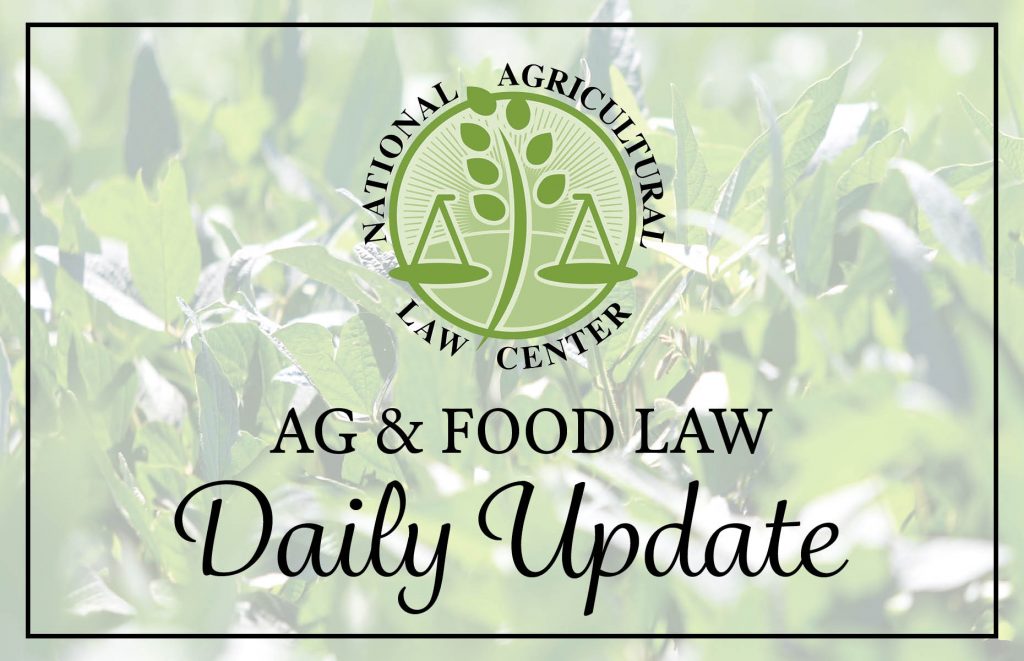A comprehensive summary of today’s judicial, legislative, and regulatory developments in agriculture and food. Email important additions HERE.
JUDICIAL: Includes Endangered Species Act, environmental law
In Ctr. for Biological Diversity v. Everson, No. 15-CV-477, 2020 WL 437289 (D. D.C. Jan. 28, 2020), the United States District Court for the District of Columbia concluded that the United States Fish and Wildlife Service (“FWS”) acted unreasonably when it decided to list the northern long-eared bat (“Bat”) as a threatened species under the Endangered Species Act (“ESA”). FWS issued a final rule listing the Bat as a threatened species in 2015. The plaintiffs in this case challenged the listing decision, arguing that the Bat should have been listed as endangered rather than threatened. According to the plaintiffs, FWS acted unreasonably by not supporting its decision to list the Bat as threatened with a rational basis. When making its decision to list the Bat under the ESA, the FWS noted that the Bat was highly susceptible to White-nose syndrome (“WNS”), a fungal disease that has spread rapidly among several bat species since 2006 and has a 100% mortality rate. According to FWS, in areas of the Bat’s range where WNS had spread, populations of the Bat had decreased by over 90%. When makings its listing decision, FWS discovered that WNS had spread to about 60% of the Bat’s range.
FWS decided to list the Bat as threatened rather than endangered because in the 40% of the Bat’s range that was not yet affected by WNS, the species had not suffered population decline. However, FWS failed to explain why that finding necessitated a finding that the Bat was threatened rather than endangered. Accordingly, the court agreed with the plaintiffs that there was no “rational connection” between the facts FWS found and the choice it made. Additionally, the court found that FWS had failed to consider the cumulative impacts of all threats to the Bat and had only focused on the threat posed by WNS. The ESA requires FWS to focus on all threats to a species population when making a listing decision. Because FWS failed to consider other threats to the Bat, like habitat loss, the court concluded that the agency had acted unreasonably in making its decision. Accordingly, the court sent the decision on whether to list the Bat as threatened or endangered back to FWS so that it could make a decision that complied with the court’s ruling.
REGULATORY: Includes AMS
AGRICULTURAL MARKETING SERVICE
Final rule implementing regulations governing the sampling, inspection, weighing, and certification of rice by decreasing fees by 20 percent for fiscal year 2020 and by another 20 percent for FY 2021. Info here.
